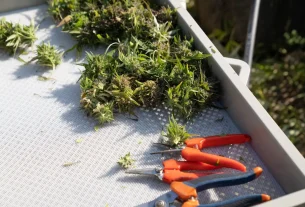Estimated Reading Time: 9 minutes
Estimated Reading Time: 9 minutes
WW’re all navigating a world that demands more of us, isn’t it? More awareness, more responsibility.
And that certainly extends to how we care for our skin.
If you’re like me, you’re probably wondering how to make better choices, not just for yourself, but also for the planet.
Let’s explore an eco-friendly skincare routine that is both effective and kind to Mother Earth.
Forget the complicated, multi-step regimens; we’re focusing on simplicity and sustainability.
It’s not just about looking good; it’s about feeling good.
Knowing your choices contribute to a healthier planet brings a different kind of glow, doesn’t it?
This isn’t about perfection; it’s about progress, one conscious decision at a time.
So, let’s dive into the world of green beauty and discover how to create a skincare routine that aligns with your values.
Why bother switching to an eco-friendly skincare routine?
Well, the beauty industry, despite its allure, can be a significant source of environmental impact.
From the ingredients used to the packaging, the production, and the waste, there’s a lot to consider.
Conventional skincare products often contain harsh chemicals, synthetic fragrances, and microplastics that can harm our waterways and marine life.
Moreover, the packaging frequently ends up in landfills, contributing to pollution.
But, as consumers become more conscious, so does the beauty industry, and there are now more sustainable options than ever before.
Think about it: everything you put on your skin eventually makes its way back into the environment.
By choosing eco-friendly alternatives, you’re minimizing your exposure to potentially harmful chemicals and reducing your environmental footprint.
In fact, a 2024 study by the Environmental Working Group showed that switching to natural skincare products reduces your exposure to endocrine-disrupting chemicals by up to 40%.
That’s a significant benefit, not just for the planet, but also for your health.
Making the switch isn’t just a trend; it’s a lifestyle choice that protects both your skin and our precious ecosystems.
Beyond environmental benefits, an eco-friendly skincare routine offers a multitude of perks for your skin.
Natural ingredients, like plant extracts and essential oils, are often gentler and richer in antioxidants, vitamins, and other beneficial compounds.
They’re less likely to cause irritation or allergic reactions.
Plus, they can deliver outstanding results, helping to nourish, hydrate, and rejuvenate your skin.
I’ve personally experienced a significant reduction in redness and dryness since embracing natural products.
I remember a friend, Sarah, who had battled persistent acne for years.
After switching to an eco-friendly routine with organic tea tree oil and a gentle cleanser, her skin cleared up remarkably.
The change wasn’t overnight, but within a few months, her complexion was transformed.
This isn’t to say that it’s a miracle cure, but it proves how powerful natural ingredients can be.
The right eco-friendly skincare routine has transformed so many.
Remember to read labels, research ingredients, and listen to your skin’s needs.
So, how do you start building your own eco-friendly skincare routine? The good news is that it’s simpler than you might think.
It all begins with the basics. Start by decluttering your current products and assessing what you genuinely need. What works, what doesn’t?
What ingredients are you avoiding? This will help you build a list of your personal must-haves.
Think of it as a curated collection rather than a cluttered shelf.
Cleansing is where it all begins. Choose a cleanser that’s gentle, effective, and free of harsh chemicals like sulfates and parabens.
Look for natural ingredients like aloe vera, chamomile, or honey. They’re known for their soothing and hydrating properties.
You might consider solid cleansing bars packaged in cardboard to reduce plastic waste.
I switched to a gentle, rosehip oil-based cleanser, and my skin has never felt cleaner without that tight, stripped feeling.
Next, incorporate gentle exfoliation once or twice a week to remove dead skin cells and reveal a radiant complexion.
Opt for natural exfoliants like sugar or coffee grounds. These are much kinder to the environment than microbeads.
I love mixing coffee grounds with a little olive oil for a DIY scrub. It’s inexpensive, effective, and smells amazing.
Just be mindful of over-exfoliating; a little goes a long way.
Moisturizing is the key to healthy, glowing skin.
Look for moisturizers that are packed with nourishing ingredients like shea butter, jojoba oil, or hyaluronic acid.
Opt for products in sustainable packaging, such as glass jars or refillable containers.
Remember to apply moisturizer while your skin is still slightly damp to lock in hydration.
I can’t stress enough how vital proper moisturization is, especially during colder months.
Protecting your skin from sun damage is non-negotiable. Choose a mineral-based sunscreen with zinc oxide or titanium dioxide.
These are considered safer for both your skin and the environment.
Avoid chemical sunscreens, as they can contain oxybenzone and octinoxate, which are harmful to coral reefs.
Check the ingredients carefully, and don’t forget to reapply every two hours, especially when you’re exposed to the sun.
Building an eco-friendly skincare routine isn’t just about choosing the right products.
It’s also about making conscious choices in your daily habits. Here are a few tips to elevate your eco-conscious approach.
It’s one thing to talk about theory; it’s another to see it in action.
Let me share a few real-life stories from friends who have embarked on this journey. One of my friends, Emily, was struggling with sensitive skin.
After switching to an eco-friendly skincare routine, she noticed a huge difference.
Her skin irritation calmed down, and her complexion became more balanced.
The switch wasn’t just about the products she used; it was about the peace of mind that came with knowing she was making healthier choices.
Another friend, David, used to spend a fortune on skincare.
After researching some sustainable options, he realized he could achieve the same results with simpler, more affordable choices.
He started with a few basic products, like a gentle cleanser, a light moisturizer, and a mineral sunscreen.
He also began making some of his own skincare products. His skin improved, and he saved money.
It just goes to show how a commitment to sustainability can lead to financial benefits, as well.
I’ve also personally benefited from the switch.
Before, I always felt like I needed a thousand steps for my skin, but now I’ve simplified and have a clear conscience that I’m minimizing my impact.
The eco-friendly skincare routine has also made my skin routine much more enjoyable.
The process is less about following a complicated regimen and more about taking care of myself and the planet at the same time.
The future of skincare is undeniably green.
As consumers become more aware of the environmental impact of their choices, demand for sustainable and ethical products will continue to grow.
We can expect to see more innovative packaging solutions, like biodegradable materials and refillable systems.
The industry is also increasingly investing in research and development to create more effective and sustainable ingredients.
We’ll also see a greater focus on transparency and traceability.
Consumers will want to know where their products come from, how they’re made, and what impact they have on the environment.
Brands will need to be open and honest about their practices to gain consumer trust.
This shift will drive greater innovation and force the industry to become more sustainable. The most exciting prospect?
The possibility of truly personalized and customizable eco-friendly skincare routines, tailored to our individual needs and values.
Embracing an eco-friendly skincare routine is more than a trend; it’s a commitment to your health and the planet.
It’s about making informed choices, supporting sustainable brands, and minimizing your environmental footprint.
It’s about nourishing your skin with natural ingredients and embracing a simpler, more mindful approach to beauty.
It’s not always easy to navigate all the choices out there, and it can sometimes feel overwhelming. But remember, every small step makes a difference.
Don’t be afraid to experiment, to learn, and to find what works best for you. The key is to begin.
Start by replacing one product with a more sustainable option. Then, gradually incorporate more eco-friendly habits into your daily routine.
And embrace the glow that comes with knowing you’re making a positive impact.
So, are you ready to create your own eco-friendly glow-up?
I hope this inspires you to take the leap and create a skincare routine that is both kind to your skin and to the environment.
It’s a journey of discovery, filled with a sense of doing better, and that is the ultimate beauty secret.
Are you ready to make the switch? Share your tips and experiences in the comments below!
Join our newsletter for weekly health tips!
Frequently Asked Questions
What are the most important steps in an eco-friendly skincare routine?
An effective eco-friendly skincare routine typically focuses on cleansing, exfoliating, moisturizing, and sun protection. Choose a gentle cleanser free from harsh chemicals, exfoliate with natural alternatives, moisturize with nourishing ingredients, and always protect your skin with mineral-based sunscreen. The key is to choose products with sustainable packaging and natural ingredients. Building a routine that works for you takes time but these basics are the best place to start.
What ingredients should I look for and avoid in eco-friendly skincare products?
Look for natural ingredients like plant extracts (aloe vera, chamomile), essential oils, and antioxidants. Avoid harsh chemicals like sulfates, parabens, synthetic fragrances, and ingredients that contain microplastics. Choose products with zinc oxide or titanium dioxide in place of chemical sunscreens. Always carefully read the ingredients list, and choose brands that are transparent about sourcing and manufacturing.
How can I reduce plastic waste in my eco-friendly skincare routine?
Reduce plastic waste by opting for products with minimal packaging, choosing refillable containers, and exploring solid cleansing bars packaged in cardboard. Seek out brands that utilize recyclable materials, such as glass jars and aluminum bottles, and consider DIY options to make your own skincare products. Embrace reusable cotton pads, and look for brands with take-back programs.
Are eco-friendly skincare products as effective as conventional ones?
Yes, eco-friendly skincare products can be as effective as conventional ones. Many natural ingredients are packed with antioxidants, vitamins, and other beneficial compounds that nourish and rejuvenate the skin. It often comes down to the formulas and ingredients selected. Look for well-formulated, naturally-derived products, and always consider your skin’s individual needs. The long-term effects on your skin may be even better than conventional products.
How can I find the most ethical and sustainable skincare brands?
Finding ethical and sustainable brands requires some research. Look for certifications (such as Ecocert, COSMOS, or USDA Organic), transparent ingredient sourcing, and ethical manufacturing practices. Research brands that use sustainable packaging and actively support environmental causes. Read customer reviews, and look for brands that prioritize fair labor practices and minimize their environmental impact.




